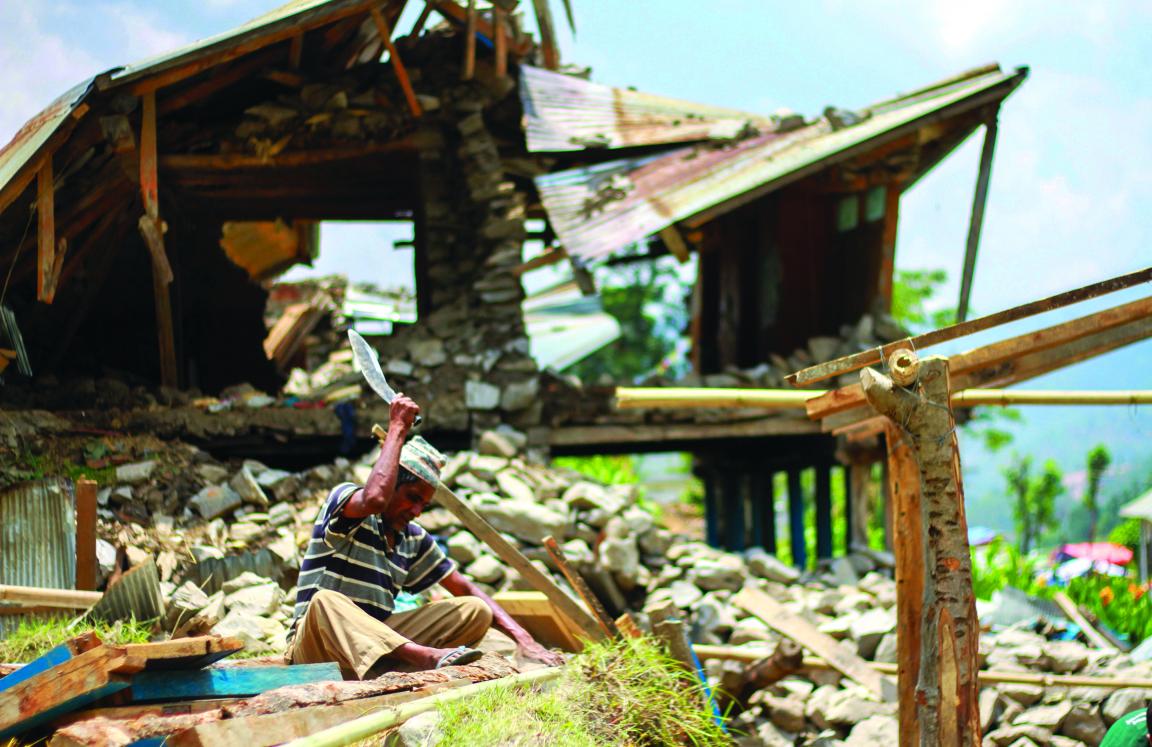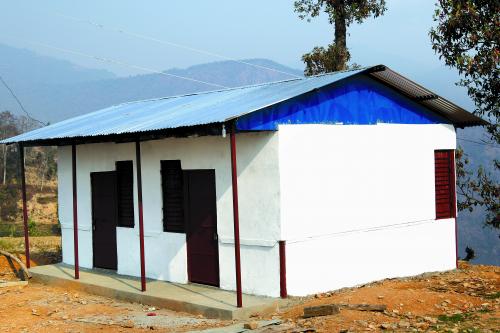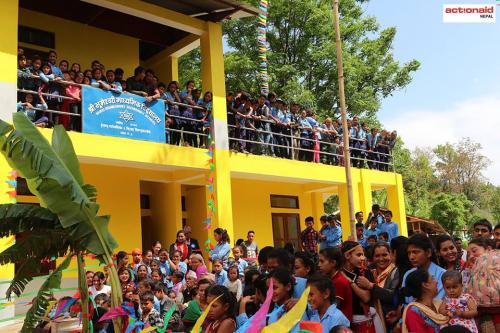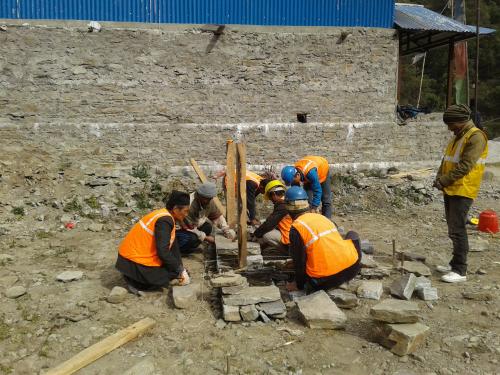
Local man engaged in constructing temporary shelter aftermath the earthquake
Kiul, Sindhupalchowk
Community Led Reconstruction Programme
AAN had implemented Community Led Reconstruction Programme (CLRP) after the 2015 massive earthquakes. AAN views reconstruction not merely as physical reconstruction but also as reconstruction of economic, social and cultural components. CLRP was launched to realize and practice the idea of ‘build-back-better’ and ‘engendering resilience within communities’.
Almost 3 years since the devastating earthquake, CLRP has been able to contribute in areas of sustainable livelihood, reconstruction, advocacy and rights, accountability and transparency, women safety and security, infrastructural development and many more in 26 local and municipal levels of 6 most earthquake hit districts: Kathmandu Valley, Dolakha, Rasuwa, Sindhupalchowk, Makwanpur and Kavrepalanchowk. CLRP is thus derived as a long-term post disaster reconstruction with an ownership of the community.

Sexual exploitation, trafficking, violence and abuse were some of the core repercussions of Nepal’s earthquake. Development of 30 Women Friendly Spaces (WFSs), 33 Women Rights Forums and 110 Adolescents Groups at local level has contributed to strengthen women and girls while fighting against sexual exploitation, violence and abuse. WFSs continue to provide women with the opportunity to get together and discuss their problems, receive training and psychosocial support, access information on their rights and access services.

Likewise, 137 Community Reconstruction Committees (CRCs) were formed at VDC and/or ward level with the representation of 2,045 women to facilitate reconstruction of houses, schools and public buildings in the local level. This has resulted in increased level of community participation, inclusion and participatory accountability and transparency. By the mobilization and participation of CRCs in the practical field works and financial management, the programme is reconstructing 12 disaster resilient schools, of which 10 has been completed and the remaining 2 are planned to be completed by April 2019. The schools also constitute gender and disable friendly infrastructures.
Local Disaster Risk Management Plans (LDRPM) for all working VDCs (26 VDCs-as per the preceding governance structure) were also prepared and handed over to the concerned stakeholders to implement and incorporate them in local governance policies.
Similarly, 49 mitigation activities were implemented which include water tank, bridge, irrigation canal, gabion wall and others. Small scale mitigation activities were implemented after analyzing the PVA report and continuous dialogue/discussion between the community and stakeholders. As an initiative for Gender Responsive Public Services, Women and Children Service Centre was constructed in Chapagaun Police Station in Kathmandu. The centre has helped women to register grievances with confidentiality. Further, 46 such micro-infrastructures like ward office, health centre and gender desks in schools, ward office, health post were constructed/repaired, which follows similar process as small-scale mitigations.

In terms of livelihood enhancement of the earthquake affected, 64 women’s collectives were formed with the involvement of 3,935 members. The members have started to make collective savings and invest them in different livelihood alternatives like poultry, collective farming etc. They were also capacitated with financial management and business plan development trainings. Further, 853 women and marginalized people were provided with CTEVT certified vocational trainings. After receiving such trainings on masonry, wiring, plumbing etc. some of them have started their own small business/enterprise registering with Small Scale Cottage Industry Development Committee.
CLRP is also implementing a project, ‘People Led Solution for Better Accountability Practices’ (PELSAP), which emphasizes on leadership development of Citizen’s Alliance for Recovery and Reconstruction, Youth Alliance and Women Rights Forum by providing number of capacity development trainings on PVA, RtI, participatory planning process, social audit, public hearing etc.
With these knowledge and skills, they are facilitating community development priorities related to reconstruction, recovery and sustainability of programmes. These alliances had a major role to play in local governance for bringing the reconstruction issues at the forefront and contribute to ensure transparency and accountability within the process. For instance, they were mobilised in the earthquake affected districts to continue raising the issues of reconstruction, housing grants, land and tenant issues and conduct lobby and advocacy with newly elected local bodies.